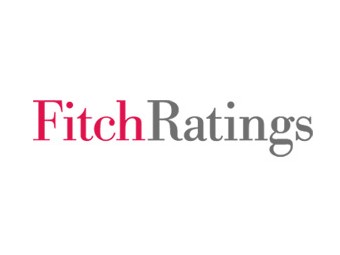The inventory of properties in the foreclosure process expanded by nearly 10 percent in the first quarter, casting a pall over the housing recovery as local markets prepare for more foreclosures than expected. However, a high level of demand driving by investor activity may mitigate their impact.
RealtyTrac® today said nearly 1.5 million U.S. properties were actively in the foreclosure process or bank-owned (REO) in the first quarter of 2013, up 9 percent from the first quarter of 2012 but still down 32 percent from the peak of 2.2 million in December 2010.
“Delinquent loans that fell into a deep sleep after the robo-signing controversy in late 2010 are gradually coming out of hibernation following the finalization of the national mortgage settlement in April 2012,” said Daren Blomquist, vice president at RealtyTrac. “The settlement provided some closure regarding accepted foreclosure processing practices, and as a result lenders have been reviving more of these delinquent loans and pushing them into foreclosure over the past 12 months, particularly in states where a lengthy court process has resulted in a bigger backlog of non-performing loans still in snooze mode.”
Though overall inventories are up, completed inventories are still declining. CoreLogic reported today that there were 54,000 completed foreclosures in the U.S. in February 2013, down from 67,000 in February 2012, a year-over-year decrease of 19 percent. On a month-over-month basis, completed foreclosures fell from 58,000* in January 2013 to the February level of 54,000, a decrease of 7 percent.
As a basis of comparison, prior to the decline in the housing market in 2007, completed foreclosures averaged 21,000 per month nationwide between 2000 and 2006. Completed foreclosures are an indication of the total number of homes actually lost to foreclosure. Since the financial crisis began in September 2008, there have been approximately 4.2 million completed foreclosures across the country.
Approximately 1.2 million homes were in some stage of foreclosure in the U.S., known as the foreclosure inventory, as of February 2013 compared to 1.5 million in February 2012, a decrease of 21 percent. The foreclosure inventory as of February 2013 represented 2.8 percent of all homes with a mortgage compared to 3.5 percent in February 2012. This was the 16th consecutive month with a year-over-year decline. Month over month, the foreclosure inventory was down 1.8 percent from January 2013 to February 2013.
“February’s 54,000 completed foreclosures is the lowest level nationally since September 2007, with most major metropolitan areas experiencing improvements,” said Dr. Mark Fleming, chief economist for CoreLogic. “Even the major Florida markets are benefiting with the foreclosure inventories falling the fastest in major metropolitan areas, although from a very high level.”
“We continue to see a declining trend in foreclosure activity, with major markets leading the way,” said Anand Nallathambi, president and CEO of CoreLogic. “The drop in delinquencies and foreclosure starts will help support a resurgence in the home purchase market this year and next.”
Highlights of RealtyTrac’s report:
- The annual increase in foreclosure inventory at a national level was caused by a 59 percent jump in pre-foreclosure inventory, while inventory of homes scheduled for foreclosure auction decreased 25 percent and inventory of bank-owned homes decreased 3 percent.
- Foreclosure inventory behavior was split nearly down the middle at the state level, with 26 states posting annual increases in foreclosure inventory and 24 states, along with the District of Columbia, posting annual decreases in foreclosure activity.
- Among properties actively in the foreclosure process (excluding bank-owned properties), 35 percent were properties identified as vacant or where the homeowner had moved. The percentage of owner-vacated foreclosure inventory was 50 percent or higher in several states, including Indiana, Oregon, Washington and Nevada.
- Inventory of listed foreclosures decreased 43 percent nationwide from a year ago, but inventory of unlisted foreclosures increased 12 percent.
- Government-backed entities Fannie Mae, Freddie Mac and FHA/HUD accounted for the biggest portion of foreclosure inventory, with a combined 12 percent of the national total, followed by Bank of America with 11 percent, Wells Fargo with 10 percent and Chase with 7 percent.
- More than two-thirds of the properties actively in the foreclosure process or bank owned as of the first quarter of 2013 were built in 1960 or later; however, in terms of year built the fastest growing segment of foreclosure inventory consisted of homes built before 1960 — up 11 percent from a year ago while foreclosure inventory of properties built in 1960 or later increased 6 percent during the same time period.
- More than 60 percent of foreclosure inventory in the first quarter of 2013 was comprised of properties with loan amounts under $200,000, while homes with outstanding loans between $200,000 to $400,000 represented an additional 30 percent of all foreclosure inventory.
Demand for foreclosures remains high, particularly among investors, though demand is generally stronger in Western markets than the Midwest and Northeast, where some judicial states have serious processing backlogs.
According to Home Value Forecast, times on market for bank owned foreclosures are selling faster than regularly priced homes in a number of markets where inventories are growing, including those in judicial states like Chicago, Cleveland, Detroit and New York City.
 RealEstateEconomyWatch.com Insight and Intelligence on Residential Real Estate
RealEstateEconomyWatch.com Insight and Intelligence on Residential Real Estate
